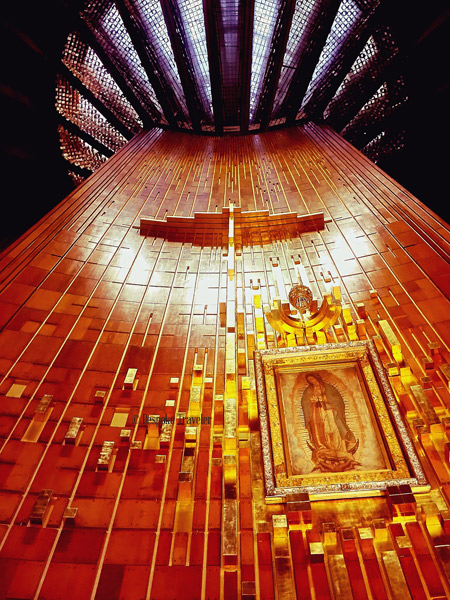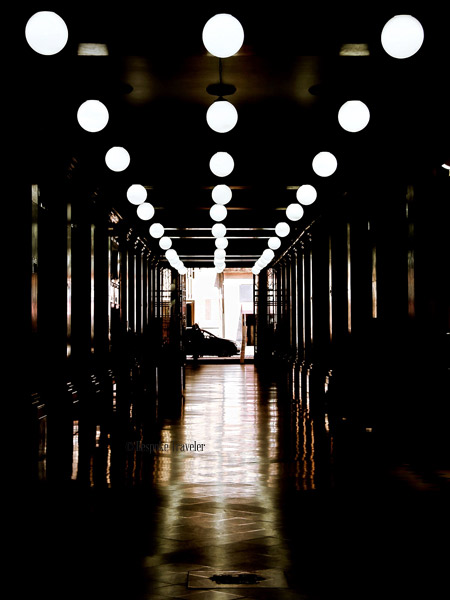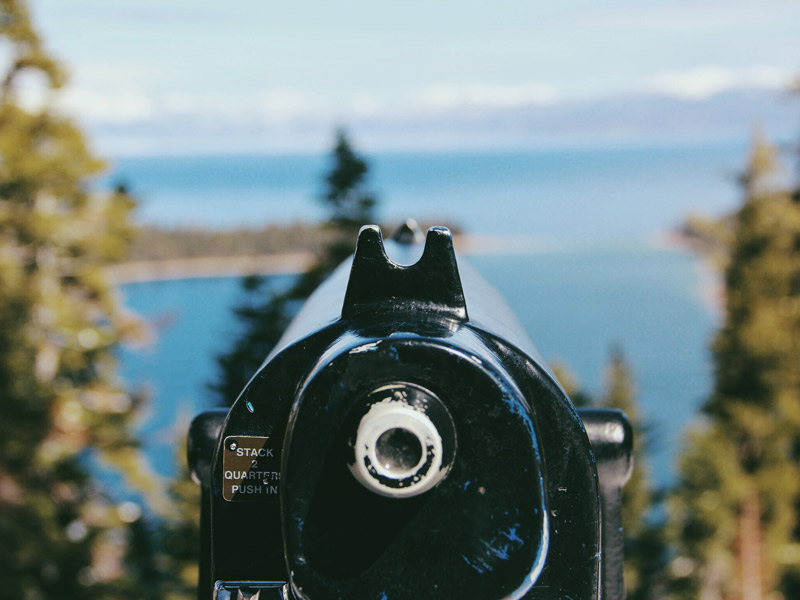 My host’s mother Maria, aged eighty-nine, casually brings up death with her son while the three of us sit at her dinner table. “Carlos,” she says, passing me a covered dish of steaming tortillas, “do not forget to bring my golden flower brooch to pin on my gown when they prepare me for burial.”
My host’s mother Maria, aged eighty-nine, casually brings up death with her son while the three of us sit at her dinner table. “Carlos,” she says, passing me a covered dish of steaming tortillas, “do not forget to bring my golden flower brooch to pin on my gown when they prepare me for burial.”
“Si, mama,” he dutifully replies, unfazed. My ears burn in embarrassment at the turn of conversation. I’m wondering if I should excuse myself when just as nonchalantly she moves onto the topic of resuscitating the faulty bathroom plumbing. It takes getting used to — this blithe relationship with Santa Muerte, this acceptance.

“Does your mother often remind you about her funeral arrangements?” I ask later as Carlos and I share coffee together.
“Of course, she wants to ensure that her wishes will be carried out after she can no longer direct things.” I marvel at their mutual open admittance of her decline. It isn’t that they do not value life, rather that they are matter-of-fact about the inexorable. For Maria’s household, her passing will be sad not tragic. Her departure will be a transfiguration not a disappearance. This is an unaccustomed paradigm for me. Death is a topic I avoid, pretending that by evasion I can stave off its inevitability. I wrestle with my impending mortality, fearful of its spectral presence. Although I understand the idea of death as our logical end, its actuality is like rain spatter on a windshield: too certain for comfort, too close for comprehension. How do I achieve meaning without succumbing to the panic of evaporating time? What do I prioritize in the Grim Reaper’s lengthening shadow?
 Death is a companion in Mexico. Whereas I ignore it, shun it, feign ambivalence towards it, here death is caressed, embraced; it even has a festival dedicated to it. Death in Mexico has always been viewed as transcendence to another state as opposed to a conclusion. Carlos and Maria’s philosophic attitude about death stems from a cultural history entangled in votive sacrifice, pre-Columbian concepts of immortality, and their immense faith in uncertainty. The same erratic fate which fills me with dread bestows them motivation.
Death is a companion in Mexico. Whereas I ignore it, shun it, feign ambivalence towards it, here death is caressed, embraced; it even has a festival dedicated to it. Death in Mexico has always been viewed as transcendence to another state as opposed to a conclusion. Carlos and Maria’s philosophic attitude about death stems from a cultural history entangled in votive sacrifice, pre-Columbian concepts of immortality, and their immense faith in uncertainty. The same erratic fate which fills me with dread bestows them motivation.
These two exist upon the fringes of poverty, precariously balanced on the edge of a city ill-equipped to support them. Yet, they cultivate fortitude within their fluctuating circumstances. I observe in them an absence of pessimism, an overflow of generosity, an eagerness to participate. “Eat more,” Maria admonishes, ladling heaps of rice and bean upon my plate. Hearing I am fond of chocolate, Carlos bicycles a mile out of his work route to purchase cocoa tabletas. An endless array of relative’s babies and neighbor’s cats are succored in spare moments. Vagaries, misfortunes are equably handled without resentment or bitterness. It is when I accompany Maria to Our Lady of Guadeloupe, Mexico’s most venerated basilica, that I learn how her espousal of uncertainty is the basis for her acknowledgement of death.
 Situated at the base of Tepeyac hill to honor Juan Diego’s vision of the Madonna, the church is the recipient of abject pleas, heartbreaks, and confessions. We enter its round edifice, seating ourselves as close to the altar as possible. From our vantage the framed Marian image is indecipherable. The devotion is indisputable, however, as pilgrims invoke her benediction upon their troubles — their eyes glued to the tableau in a thousand undertones of desire. Maria pays quick homage but we do not linger. Out in the plaza she and Carlos open up a cooler, handing out free tortas to departing worshipers.
Situated at the base of Tepeyac hill to honor Juan Diego’s vision of the Madonna, the church is the recipient of abject pleas, heartbreaks, and confessions. We enter its round edifice, seating ourselves as close to the altar as possible. From our vantage the framed Marian image is indecipherable. The devotion is indisputable, however, as pilgrims invoke her benediction upon their troubles — their eyes glued to the tableau in a thousand undertones of desire. Maria pays quick homage but we do not linger. Out in the plaza she and Carlos open up a cooler, handing out free tortas to departing worshipers.
 “They arrive from many miles on foot,” Maria explains when I ask her the reason for this charitable monthly expedition. “They show up to ask for miracles, to give thanks for intercessions. Most have no money to eat. The Virgin gives their souls conviction. I would like to give their stomachs the confidence to approach her.”
“They arrive from many miles on foot,” Maria explains when I ask her the reason for this charitable monthly expedition. “They show up to ask for miracles, to give thanks for intercessions. Most have no money to eat. The Virgin gives their souls conviction. I would like to give their stomachs the confidence to approach her.”
“It’s a courageous thing you do,” I say to her, “feeding others from your sparse kitchen.”
“I have hope,” she replies. At first I am bewildered by her statement, wondering if I have translated her Spanish correctly in my head.
“You trust that you will be provided for? That everything will turn out for the best?”
Maria laughs. “No, I am not naïve! I believe, though, that what I do matters…I believe in the power of the unknown.” Old, young, couples, and children grab a torta from Maria; some look her in the eye and smile, some thank her, some clutch it furtively with averted gaze. In spite of their varied reactions, they all yearn for the pledge of protection against loss and unpredictability. A promise assured them in large letters by the shrine, “Am I not here, I who am your mother?” In contrast, Maria’s concrete ministry arises from her ability to seize opportunity regardless of its outcome. Will her manna have an eternal affect on these souls, on her family, on her neighbors, on me? She is content not knowing. In the meantime, there are empty stomachs to be fed.

As we head back to Maria and Carlos’ abode, minus two hundred flatbreads, I realize I have mistaken hope as waiting, as a reason not to act. Too often, in my fascination with history, I focus on its repetitive failure to raise the human spirit. I grow disheartened by our refusal to absorb the past’s lessons. Paralyzed by my own inadequacies, I dwell upon monumental achievements during my tenuous span. I give too much import to legacies. How narrow my visions have been when there are infinite possibilities in the crux of what frightens me! The freedom to operate within death’s grasp is a momentous adjustment, an organic tremor in my outlook. It is by shining a light along the margins of darkness, by performing concrete meaningful deeds — however small or forgotten — that I can reconcile with death.

TRAVEL NOTE:
Mexican artists have long tangled with their culture’s complicated relationship to death. “Pedro Páramo,” a seminal novel by author Juan Rulfo explores this theme as well as the tragedy of violence, and the meaning of hope. An inspiration to Gabriel García Márquez, the book recounts Juan Preciado’s surreal experiences in the unusual hometown of his influential and formidable father.
What is your definition of hope? Has being hopeful hindered you or helped you? Share your stories in the comments below.
Discover more from Bespoke Traveler
Subscribe to get the latest posts to your email.





Uplifting and life-affirming. Thank you!
It delights me to know you find the story to be so! I always appreciate you stopping by to read.
Very moving and insightful post. You are lucky to have spent time with such gracious, simple people. Their faith is touching.
I was very lucky to have them as my hosts.
What a thought provoking and positive way to look at things. Thank you so much for sharing.
Very grateful that you enjoyed my story.